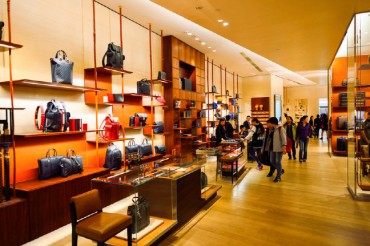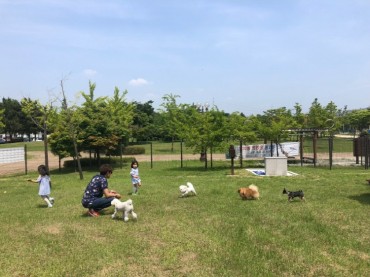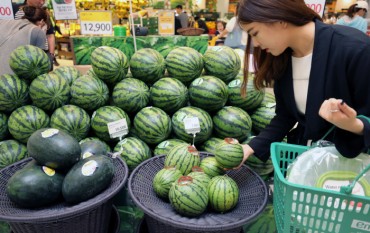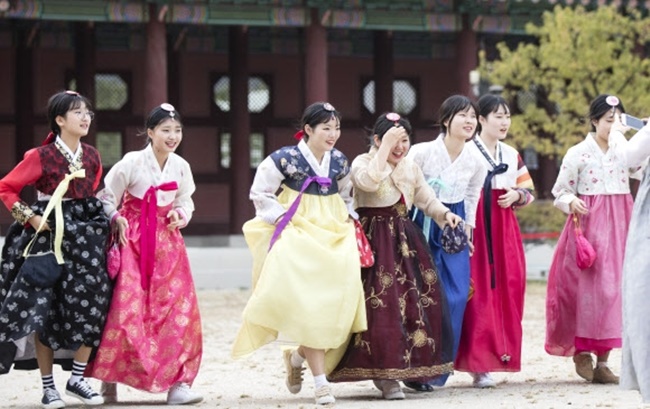
According to Joo Do-gyeong, who studied anthropology at Seoul National University, the unique colors and eye-catching designs, as well as the inherent comfort, are behind the growing number of young South Koreans sporting hanbok around historical spots such as Gyeongbokgung Palace and Jeonju Hanok Village in recent years. (Image: Kobiz Media)
SEOUL, Dec. 21 (Korea Bizwire) – A hanbok expert says a growing number of young South Koreans are choosing to don traditional Korean attire, as many see it as a substitute for ready-made clothes, and the unique design presents a fun experience similar to cosplay.
According to Joo Do-gyeong, who studied anthropology at Seoul National University, the unique colors and eye-catching designs, as well as the inherent comfort, are behind the growing number of young South Koreans sporting hanbok around historical spots such as Gyeongbokgung Palace and Jeonju Hanok Village in recent years.
In the thesis published in the latest edition of the National Folk Museum of Korea’s journal, Joo says hanbok are increasingly been seen as a worthwhile substitute for regular western style clothes among young people.
Joo identified the trend after monitoring some 5,000 members of hanbok online communities aged between 20 and 49, as well as conducting in-depth interviews with some of them.
“For those who have had a hard time putting together an ensemble, hanbok have emerged as a replacement. Hanbok offer a completely different quality to contemporary fashion,” Joo said.
Joo says what distinguishes between hanbok and contemporary clothes is the variety of colors found in the traditional Korean garments.
“Relatively high bright and high chroma colors are often used for the fabrics of hanbok. Unlike contemporary ready-to-wear clothing that mainly consists of darker colors such as black, gray and brown, hanbok are colorful and unique.
Unlike contemporary clothing, which often fits close to the body in order to show off one’s figure, hanbok are more comfortable and provide flexibility for different body types by adjusting knots.
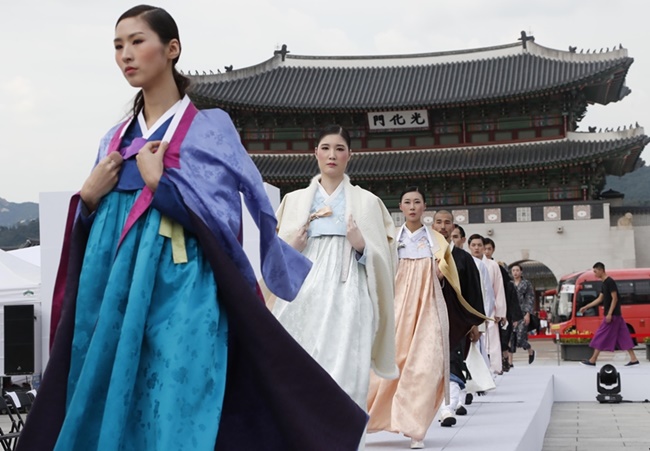
A hanbok expert says a growing number of young South Koreans are choosing to don traditional Korean attire, as many see it as a substitute for ready-made clothes, and the unique design presents a fun experience similar to cosplay. (Image: Yonhap)
“Hanbok are usually immune to fads and trends, and the designs change at a much slower pace, which means they can be worn for a long time and also be passed down from generation to generation,” said Joo, while praising the Korean traditional garment for its sustainability.
“Among members of online communities, hanbok are not a symbol of traditional life, but an outfit that can be worn in our everyday life. It’s worth noting that young people are wearing hanbok just because they want to and keeping the traditional alive as a result, as opposed to doing something under the pressure of preserving tradition,” Joo said.
Ashley Song (ashley@koreabizwire.com)



